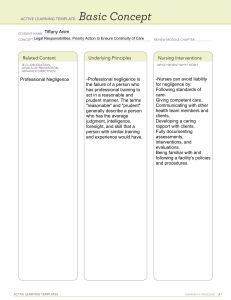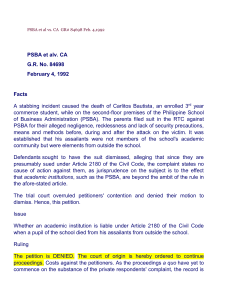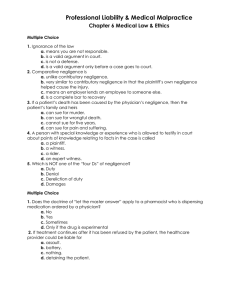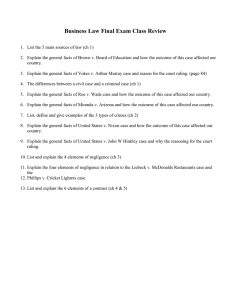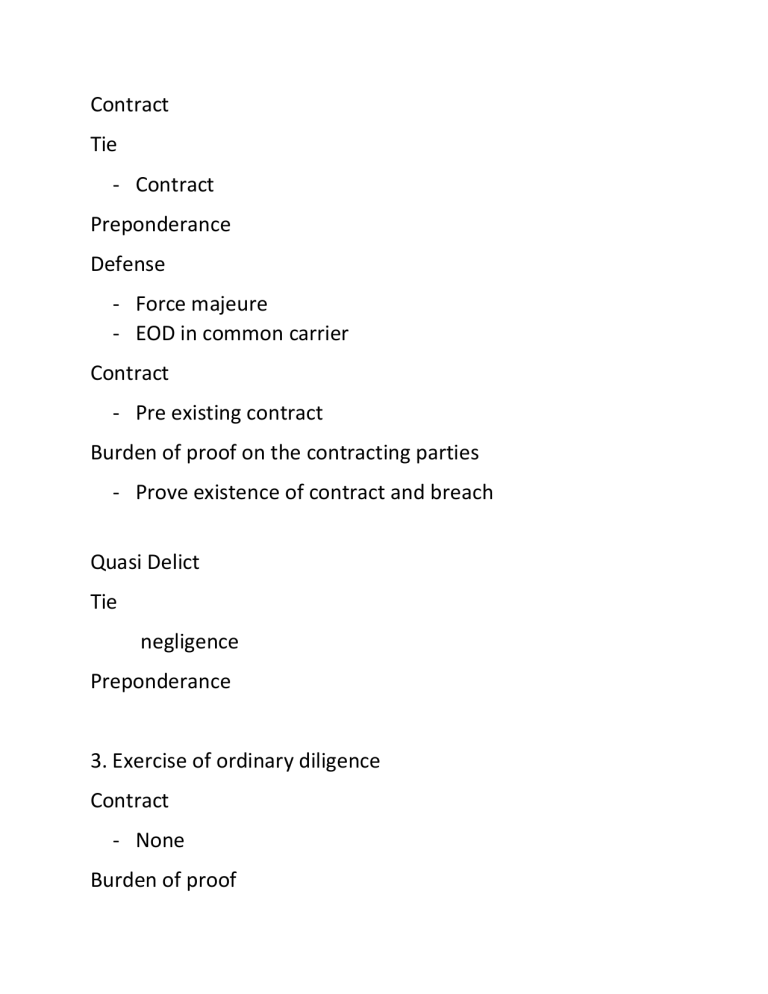
Contract Tie - Contract Preponderance Defense - Force majeure - EOD in common carrier Contract - Pre existing contract Burden of proof on the contracting parties - Prove existence of contract and breach Quasi Delict Tie negligence Preponderance 3. Exercise of ordinary diligence Contract - None Burden of proof - The victim to prove fault or negligence and causal connection Distinction of contract from delict Legal Tie 1. Contract itself 2. Act or omission w/ intent Proof 1. Mere preponderance of evidence 2. Beyond reasonable doubt Defenses 1. Eod CC and force majeure 2. Generally none but there is mitigating, exempting, justifying Pre-existence of contract 1. Yes 2. None Burden 1. Contracting party 2. Prosecution Quasi-delict and delict Liability of employer 1. Primarily liable 2. Subsidiary Reservation as to the civil aspect 1. If criminal aspect is instituted, also deemed instituted civil. The institution of criminal, separate from civil aspect. If quasi-delict filed, the victim can also file a separate criminal action. 2. Deemed instituted, unless there can be reservation if a separate action is reserved Where to file Common principles 1. Emergency rule – a scenario where on who suddenly finds himself in place of danger and required to act to avoid the impending danger. Not liable for any negligence if you are acting under the emergency rule. 2. Diligence of a good father – diligence required on a prudent man 3. Last clear chance principle – if a person on occasion where there is sudden danger, the last person who can avoid the accident and you have actually time to avoid. However, despite that circumstance you did not avoid, you should be held liable. Article 19, 20, 21
